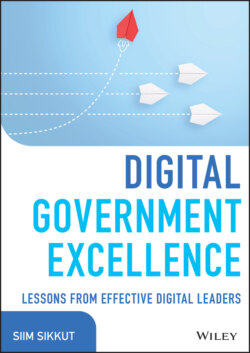Читать книгу Digital Government Excellence - Siim Sikkut - Страница 32
What Were Your Regular Practices or Routines to Act on These Values or Make Delivery Happen?
ОглавлениеIt was important to be there myself with the team as necessary. One of the things in our office was that the walls were made of glass so that everyone could see each other. The team could always reach me; I was always there: whether in the office or WhatsApp or any of my social media accounts. This enabled me to put more pressure on them to deliver. Because they knew I would always be there if needed.
Speed was our pressure. I needed the team who could run with me. They needed to believe in me under the pressure. They needed to see that I was there 24/7, so I did reply to their requests, emails, calls immediately as soon as I could.
We had a policy in the meetings that anyone could attend any meeting. Register at least half an hour before, and we would make sure you have a seat. If it is with external members, listen in during the meeting—if you have anything to ask, ask at the end. This opened more doors for the people to understand what happened around them. Imagine you are in this organization and working very hard, then suddenly there is a new project or success, and you hear about in the newspaper or radio only. This will kill the enthusiasm in your heart that made you every early morning come to work and join this organization. So I made sure that everyone in the organization believed and felt that they were an important part of the of the organization.
We also needed to be happy employees to make the lives of people happier. That is why we took leisure trips together or went to events, also outside the country. Or we would go biking or sailing. Some of these things were going on every weekend, also with families. Happy employees could present this vision to the others, and they would believe it more if they saw it in us.
In the last years, we implemented the tribe and holacracy models.2 That changed the mood for later-stage deliverables. People who used to punch in at 7 am and punch out 3 pm, they started working as if they were new people—as soon as they saw that each one of them was valued and could contribute. I had to send people dinner to their office or ask them to go home!
We went for the tribe approach to have a very fast way to deliver even small deliverables all the time. It was also a way to make sure that management needed to interfere only if necessary. No need to interfere if things were going right anyway. This was also a way to allow for experimentation, to have teams go and have a space to implement and test what works.
